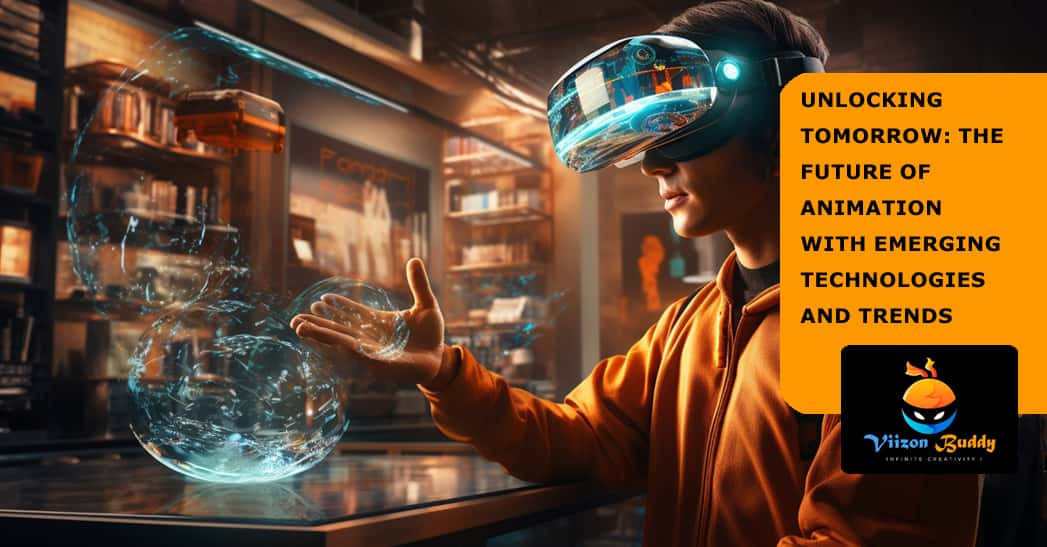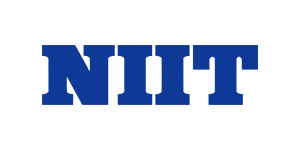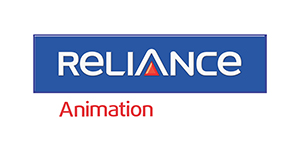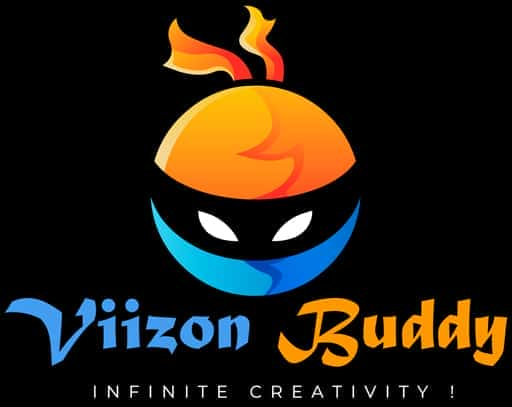Animation has always been a captivating medium, continually evolving to push the boundaries of storytelling and visual artistry. As we stand on the brink of new technological advancements, the future of animation promises even more groundbreaking changes. The Animation Studio Team tries to help in this article, which delves into the emerging technologies and trends that are shaping the future of animation, offering a glimpse into a world where imagination and innovation intersect.
The Rise of Artificial Intelligence in Animation
AI-Powered Animation Tools
One of the most significant technological advancements in animation is the integration of Artificial Intelligence (AI). AI-powered tools are revolutionizing the way animators create and refine their work. These tools can automate various aspects of the animation process, from inbetweening (creating intermediate frames between two key frames) to lip-syncing characters with dialogue.
For instance, software like Adobe’s Character Animator uses AI to track an actor’s facial movements in real-time and apply them to animated characters. This not only speeds up production but also enhances the accuracy and expressiveness of animations.
Machine Learning and Style Transfer
Machine learning is another aspect of AI that is transforming animation. It involves training algorithms to recognize patterns and make decisions based on data. In animation, machine learning can be used for style transfer, where an animation in one style can be transformed into another. For example, a hand-drawn sketch can be turned into a fully rendered 3D model, or a scene can be reimagined in the style of a famous artist.
Deep learning algorithms are also being used to improve motion capture technology, making it more precise and accessible. These advancements allow for more realistic and nuanced character movements, enhancing the overall quality of animated films and games.
Virtual Reality and Augmented Reality
Immersive Storytelling with VR
Virtual Reality (VR) is poised to revolutionize the animation industry by creating immersive storytelling experiences. VR allows audiences to step inside animated worlds, interact with characters, and explore environments from a first-person perspective. This level of immersion adds a new dimension to storytelling, making it more engaging and emotionally impactful.
Studios like Oculus Story Studio and Google Spotlight Stories are pioneering VR animation, producing short films and interactive experiences that push the boundaries of traditional animation. These VR animations offer viewers a 360-degree view of the story, allowing them to experience the narrative in a way that was previously impossible.
Enhancing Reality with AR
Augmented Reality (AR) is another technology that is making waves in animation. Unlike VR, which creates entirely new worlds, AR overlays animated elements onto the real world. This technology is being used in everything from mobile games to educational apps.
For example, Pokémon Go uses AR to bring animated creatures into the real world, allowing players to interact with them through their smartphones. Similarly, educational apps use AR to animate historical figures or scientific models, making learning more interactive and engaging.
Real-Time Rendering and Game Engines
The Power of Real-Time Rendering
Real-time rendering is a game-changer for animation, allowing creators to see changes in real-time as they work. This technology, powered by advanced graphics processing units (GPUs), significantly speeds up the animation process and enhances the quality of the final product.
Tools like Unreal Engine and Unity are leading the charge in real-time rendering. These game engines are not only used for video game development but also for animated films and virtual production. Real-time rendering allows for more dynamic and interactive animations, as creators can instantly see how changes affect the overall scene.
Virtual Production
Virtual production is an emerging trend that combines real-time rendering with live-action filming. This technique allows filmmakers to create and manipulate digital environments in real-time, blending them seamlessly with live-action footage. This approach has been used in major productions like Disney’s The Mandalorian, where virtual sets were created using real-time rendering technology.
Virtual production offers several advantages, including reduced production costs and increased creative flexibility. Filmmakers can experiment with different settings and lighting conditions without the need for physical sets, making the production process more efficient and adaptable.
Procedural Animation and Simulations
Automation with Procedural Animation
Procedural animation is a technique where animations are generated algorithmically rather than being manually created. This approach is particularly useful for creating complex, dynamic scenes that would be time-consuming to animate by hand. Procedural animation is often used in video games to create realistic movements and interactions.
For example, games like No Man’s Sky use procedural generation to create vast, detailed worlds with minimal manual input. This technology allows for the creation of unique, diverse environments that would be impossible to design individually.
Advanced Simulations
Simulations are becoming increasingly sophisticated, allowing animators to create more realistic and detailed effects. Fluid dynamics, cloth simulations, and particle systems are just a few areas where advanced simulations are making a significant impact.
Software like Houdini is leading the way in this field, offering powerful tools for creating complex simulations. These advancements enable animators to create stunning visual effects, from realistic water and fire to intricate cloth and hair movements.
The Role of Blockchain in Animation
Protecting Intellectual Property
Blockchain technology is emerging as a valuable tool for protecting intellectual property in the animation industry. By providing a decentralized and secure way to record ownership and distribution rights, blockchain can help prevent piracy and ensure that creators are fairly compensated for their work.
For example, platforms like Verisart use blockchain to certify and timestamp digital artworks, providing a verifiable record of ownership. This technology can be applied to animations, ensuring that creators retain control over their intellectual property and receive royalties for their work.
Funding and Distribution
Blockchain is also being used to revolutionize the funding and distribution of animated content. Decentralized platforms like MovieBloc and BitMovio allow creators to raise funds directly from their audience and distribute their work without the need for traditional intermediaries.
This democratization of funding and distribution opens up new opportunities for independent animators and smaller studios, allowing them to reach global audiences and generate revenue without relying on major studios or distributors.
The Influence of 5G on Animation
Faster Data Transfer and Low Latency
The rollout of 5G technology is set to have a profound impact on the animation industry. With its promise of faster data transfer speeds and low latency, 5G will enable real-time collaboration and remote production on an unprecedented scale.
Animators can work together from different parts of the world, sharing high-resolution files and assets without delay. This increased connectivity will also enable more complex and data-intensive animations, pushing the boundaries of what is possible in terms of visual fidelity and interactivity.
Enhanced Streaming and Cloud-Based Animation
5G technology will also enhance the streaming and consumption of animated content. High-quality, data-rich animations can be streamed seamlessly to a variety of devices, including smartphones and tablets. This will lead to a more widespread and accessible distribution of animated films and series.
Moreover, 5G will facilitate the rise of cloud-based animation platforms, where the entire production process can be conducted online. Animators can access powerful cloud-based tools and render farms, reducing the need for expensive hardware and making high-quality animation more accessible to a broader range of creators.
The Future of Animation in Various Industries
Animation in Education
As animation technology continues to evolve, its applications in education are expanding. Animated educational content can make learning more engaging and effective, particularly for younger audiences. Interactive animations and AR/VR experiences can bring complex subjects to life, making them easier to understand and more memorable.
Educational platforms like Khan Academy and Coursera are already incorporating animation into their courses, providing visual explanations and interactive exercises. As technology advances, we can expect to see even more sophisticated and immersive educational animations.
Animation in Healthcare
The healthcare industry is also benefiting from advancements in animation. Medical animations can provide detailed visualizations of complex biological processes, helping both professionals and patients understand medical procedures and conditions.
For instance, animated simulations can demonstrate how a particular surgery is performed or how a drug interacts with the body. These visual aids can enhance medical training and improve patient education, leading to better healthcare outcomes.
Animation in Marketing and Advertising
Animation is becoming an increasingly powerful tool in marketing and advertising. Animated advertisements can capture attention and convey messages in a memorable and engaging way. As digital marketing continues to grow, the demand for high-quality animated content is likely to increase.
Brands are using animation to create compelling stories and interactive experiences that resonate with their audience. From animated explainer videos to AR marketing campaigns, animation offers a versatile and effective way to connect with consumers.
Conclusion
The future of animation is bright, driven by emerging technologies and innovative trends that are transforming the industry. From AI and machine learning to VR, AR, and real-time rendering, these advancements are opening up new possibilities for creators and audiences alike. As animation continues to evolve, it will play an increasingly important role in various industries, from entertainment and education to healthcare and marketing.
In this rapidly changing landscape, staying informed about the latest technologies and trends is crucial for animators and studios. Embracing these innovations will not only enhance the quality and efficiency of animated content but also expand the creative horizons of what animation can achieve.
FAQs
How is AI changing the animation industry?
AI is revolutionizing the animation industry by automating various aspects of the production process, such as inbetweening and lip-syncing. AI-powered tools enhance efficiency and accuracy, allowing animators to focus on creative aspects. Machine learning and deep learning also contribute to style transfer and improved motion capture technology, making animations more realistic and expressive.
What is the impact of VR and AR on animation?
VR and AR are transforming animation by creating immersive and interactive experiences. VR allows audiences to explore animated worlds from a first-person perspective, adding a new dimension to storytelling. AR overlays animated elements onto the real world, enhancing mobile games and educational apps. Both technologies are expanding the possibilities of animation and making it more engaging.
How will 5G technology influence animation?
5G technology will significantly impact animation by enabling faster data transfer and low latency, facilitating real-time collaboration and remote production. It will enhance the streaming of high-quality animations and support cloud-based animation platforms. This increased connectivity and accessibility will push the boundaries of animation, making high-quality content more widespread.













 by
by 